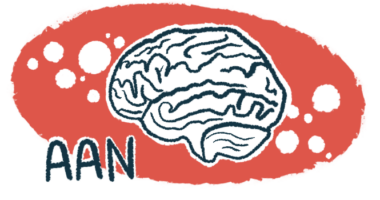Young Researcher Awarded for Work on Processes Driving Development of ALS and Frontotemporal Dementia

Biochemist Dorothee Dormann, PhD, at the Ludwig Maximilians University, in Munich, was awarded the 2019 Paul Ehrlich and Ludwig Darmstaedter Prize for Young Researchers for her groundbreaking work showing that amyotrophic lateral sclerosis (ALS) and frontotemporal dementia (FTD) share common underlying processes that drive disease development.
“Dorothee Dormann has shown that these two completely distinct diseases have striking similarities in their pathogenesis (or disease development),” the Scientific Council that selects the prizewinner said in a press release.
“Of crucial importance were patients whose illness arose from genetic causes. The investigation of these genetic mutations helped Dormann elucidate aspects of the pathogenesis and identify possible molecular targets for therapy,” it added.
ALS is a progressive neurological disorder characterized by the loss of motor neurons — the nerve cells responsible for controlling voluntary muscles — leading muscles to shrink (atrophy) and become weaker.
Frontotemporal dementia (FTD) comprises a group of neurological disorders that affect the frontal and temporal lobes of the brain, the regions typically associated with personality, behavior, and language. Patients with FTD can experience a wide array of symptoms, ranging from dramatic changes in personality to losing their ability to speak.
Although they have different diseases, both ALS and FTD patients share a common key feature: the abnormal accumulation of two proteins, called TDP-43 (transitive response DNA/RNA-binding protein 43 kDa) and FUS.
In healthy cells, TDP-43 and FUS are transported to the nucleus and bind to both DNA and RNA, mediating the synthesis of various versions of certain proteins. However, in ALS and FTD, the proteins are locked out of the nucleus of nerve cells and accumulate into so-called stress granules.
Dormann’s work showed that the mechanisms compromising FUS entry into the nucleus of nerve cells of ALS and FTD patients occur in two distinct ways.
To enter the nucleus, FUS protein must interact with a nuclear receptor called transportin. However, in ALS, mutations in FUS significantly hamper its ability to bind to transportin.
In people with FTD, mutations are not the underlying problem; the transport of FUS into the cell nucleus is defective, rather than the protein’s structure itself. Specifically, chemical modifications in the FUS protein — called methyl groups — are lost, causing FUS protein to be stuck and unable to enter the nucleus.
In both diseases, FUS accumulates outside the nucleus inside stress granules. Here, the FUS protein arranges itself in oil droplets that do not dissolve. The FUS aggregates harden and eventually become insoluble deposits.
Dormann’s research into the molecular pathways underlying ALS and FTD may lead to new therapeutic strategies. The researcher is now investigating whether these mechanisms are also found in other neurodegenerative diseases, such as Alzheimer’s or Parkinson’s disease.






